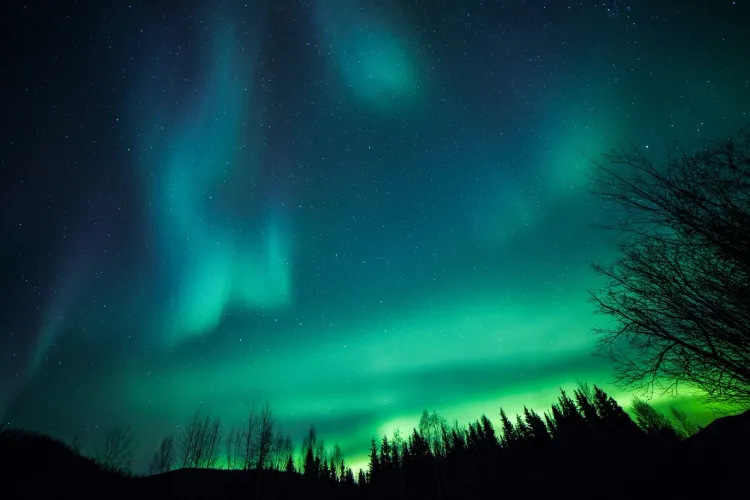What Did IIA Astronomers Discover About Solar Eruptions That Illuminated Ladakh in May 2024?

Synopsis
Key Takeaways
- The IIA decoded a series of solar eruptions leading to northern lights in Ladakh.
- CMEs can cause significant geomagnetic storms.
- The study highlights the thermodynamic evolution of interacting CMEs.
- This research enhances space weather forecasting models.
- India is making strides in solar astrophysics research.
New Delhi, July 16 (NationPress) Astronomers from the Indian Institute of Astrophysics (IIA), an autonomous body under the Department of Science and Technology (DST), have successfully unraveled a series of intense solar explosions that resulted in stunning northern lights illuminating Ladakh's night skies in May 2024.
These solar explosions, known as Coronal Mass Ejections (CMEs), represent vast expulsions of magnetized plasma from the Sun's outer layer. The CMEs can provoke geomagnetic storms capable of disrupting satellite functions, communication networks, and power infrastructures.
The IIA researchers established that the significant geomagnetic storm initiating on May 10, 2024, was associated with a rare sequence of six distinct CMEs occurring in succession, linked to both solar flares and filament eruptions from an interacting complex active region on the Sun.
Understanding the thermodynamic evolution of CMEs as they traverse from the Sun to Earth has been a formidable challenge, primarily due to the limited observational data available near the Sun and in near-Earth space.
To gain insights, a team of solar astrophysicists at IIA developed a model utilizing data from NASA and ESA space missions.
They examined how the unusual sequence of six interacting solar explosions, detected at IIA’s Indian Astronomical Observatory in Hanle, Ladakh, interacted and evolved thermally as they made their journey from the Sun to Earth.
The team meticulously traced not only the paths but also the temperatures and magnetic conditions of these explosions as they expanded throughout the solar system.
“Our findings reveal that interactions among CMEs result in significant thermal restructuring. By the time they reach Earth, the electrons within the complex ejecta were predominantly in a heat-releasing state, while ions exhibited a combination of heating and cooling behaviors, with the heating state prevailing overall,” stated lead author Soumyaranjan Khuntia, a doctoral candidate at IIA.
The study demonstrated that most CMEs initially release heat but later transform into a state that absorbs and retains heat, particularly as they continue to expand away from the Sun.
The researchers discovered that these solar clouds not only transport heat but also alter their thermal characteristics mid-journey. Initially, the CMEs emit heat, only to transition into a state where they absorb and retain it.
“This study marks the first of its kind, both in India and globally, to capture the continuous thermodynamic evolution of multiple interacting CMEs across such a vast expanse in the heliosphere,” remarked Dr. Wageesh Mishra, a faculty member at IIA.
The outcomes, published in the Astronomy and Astrophysics Journal, represent a significant advancement in enhancing space weather forecasting models, especially in predicting the effects of complex CME events on Earth's magnetosphere.









